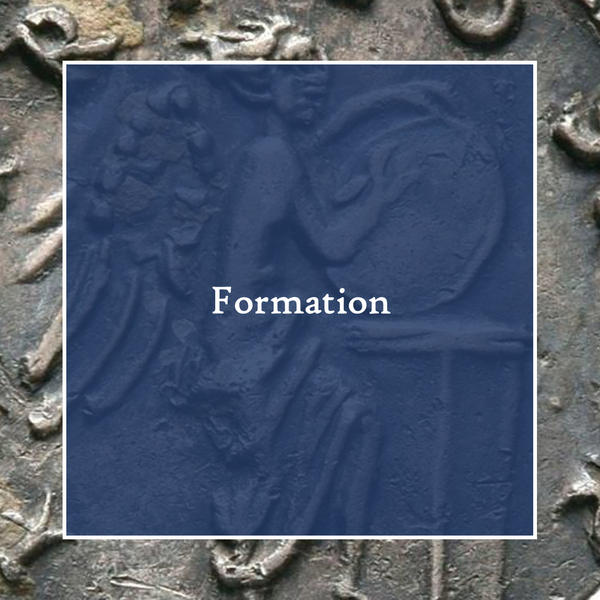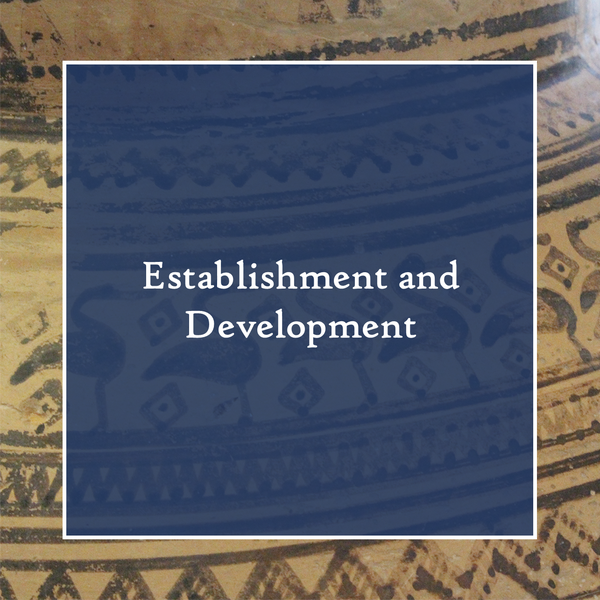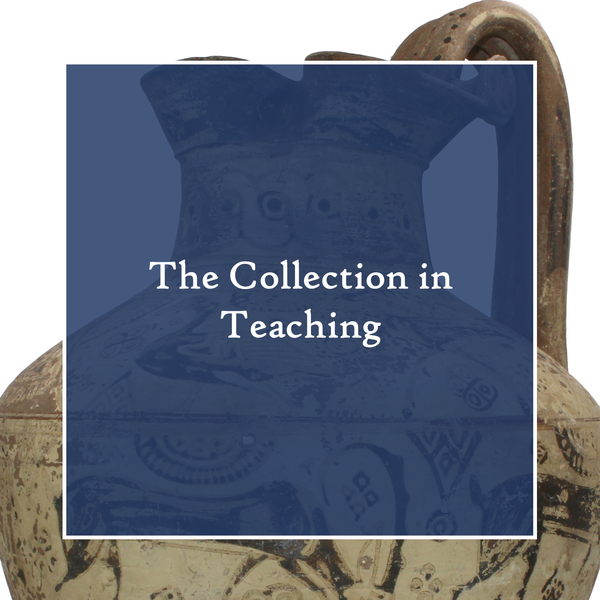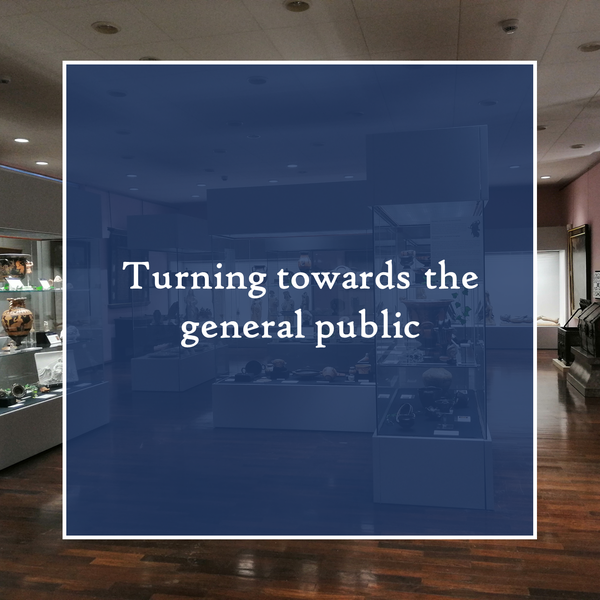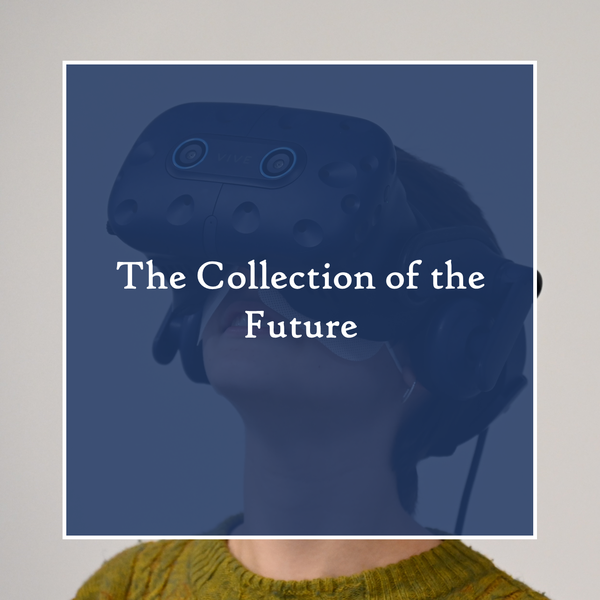About the Collection
|
|
As early as 1826, the "Academic Art Museum" was founded on the model of Bonn, and it was renamed the "Art, Coin, and Antiquities Cabinet" in 1835. The holdings of the early collection are largely unknown, as all archival documents were destroyed during World War II. In addition to a coin collection dating back to the 18th century, the cabinet included a collection of plaster casts and, still preserved today, the "Lippert'sche Daktyliothek." Since its establishment, the collection has been steadily expanded through the purchase of originals and casts from Paris, as well as through various donations. For example, in 1835, the Archaeological Institute received casts from the Erbach Collection. From the end of the 19th century, the collection can be documented more precisely. Bruno Sauer, who habilitated at Giessen in 1892 and is considered the actual founder of the local Classical Archaeology, took intensive care of the collection in 1897. Since 1898, the collection has been known as the "Archaeological Institute." In addition to planning an expansion of the cast collection, which had been housed in nearly 300 m² of space since the move to the so-called "Neue Kollegiengebäude" in 1879, Sauer also systematically expanded the collection of originals. |
|
|
The few "instructive shards" that Sauer had found were supplemented from 1897 onwards by complete vases and terracotta figurines that he acquired through the art trade. Pieces from the Margaritis, von Leesen, and Vogell collections thus came to Giessen. Sauer also obtained important originals from Greece, thanks to his brother-in-law, the archaeologist Paul Wolters, and Hugo Hepding, who later became director of the University of Giessen and was a classical philologist and collaborator in the German Pergamon excavation. Additionally, during Sauer's tenure, numerous donations expanded the collection, including Troy duplicates from the Schliemann Collection, material from Beni Hasan by J. Garstang, and material from Abusir provided by the German Oriental Society. Recent reconstructions of the collection's history have shown that a significant portion of the pre-war holdings was acquired by Bruno Sauer. Under his successor, Carl Watzinger, the important collection of Etruscan votive terracotta figurines from the Königsberg anatomist Ludwig Stieda was also added to the Giessen collection. |
|
|
For a long time after World War I, the collection was only sporadically expanded with individual sherds brought back from travels by the chairholders. Under Margarete Bieber, the plaster cast collection was particularly expanded and used extensively for teaching and research purposes. It was not until 1939 that Willy Zschietzschmann was able to add several Attic red-figure vases and an important Faliscan amphora to the collection. Thanks largely to Zschietzschmann, the collection of originals survived the severe destruction of Giessen during the war with minimal damage. The coin collection was also preserved in its entirety, but the cast collection was almost completely destroyed on December 6, 1944. In the aftermath of the war—the Institute itself was not reopened until 1964 as the "Professorship for Classical Archaeology"—the collection was gradually dispersed. It was not until the 1970s that antiquities were reassembled by Hans-Günther Buchholz and his assistant at the time, W. Hornbostel, and recorded in an inventory by F. W. von Hase. Buchholz subsequently published many of the antiquities for the first time and expanded the collection in line with his research interests. The collection now includes numerous Cypriot antiquities, Late Classical vessels, and prehistoric objects. The sherd collection has also grown considerably. |
|
|
Wolfram Martini, who served as professor and head of the Collection of Classical Antiquities from 1985 to 2007, ensured that the collection and its most important pieces are now open to the public. The original collection has been on display since 1987, and part of the coin collection has been on loan since 1991. Since then, numerous new acquisitions have been added, including Attic, South Italian, and Etruscan vases, as well as Anatolian pottery and seals. As the Collection of Classical Antiquities does not have its own budget, these items have been acquired with the help of patrons or through donations. They highlight the strong connection between the public in Giessen and the Collection of Classical Antiquities at Justus Liebig University. Special exhibitions have been held regularly since 2006, typically two per year. Since 2009, the university has employed a custodian to oversee the collection and curate the exhibitions. Special attention is given to involving students in the preparations, making the Collection of Classical Antiquities a "teaching collection" in the fullest sense, where practical museum experience and public relations are taught alongside specialized knowledge.
|
|
|
Since digital technologies have become central to knowledge transfer in museums, Classical Archaeology, under the direction of Prof. Dr. Katharina Lorenz, has increasingly incorporated digital techniques into its exhibitions since 2018. This innovative and forward-looking approach to the public presentation of the university's collection benefits both museum visitors and students in the Department of Classical Archaeology. Visitors now have remote access to a growing number of digitized objects from the Collection of Classical Antiquities. Meanwhile, students gain valuable experience through guided instruction from curator Dr. Michaela Stark. In seminars and exercises, students acquire not only solid knowledge about presenting exhibits in a museum context but also in-depth skills in using digital tools to design interactive visitor experiences. Practical learning and the application of digital methods thus provide students with core competencies essential for their future careers. |
|
Publications on the history of the collection
|
|
|
Annual reports from the Collection of Antiquities can be found in Mitteilungen des Oberhessischen Geschichtsvereins. |
|

